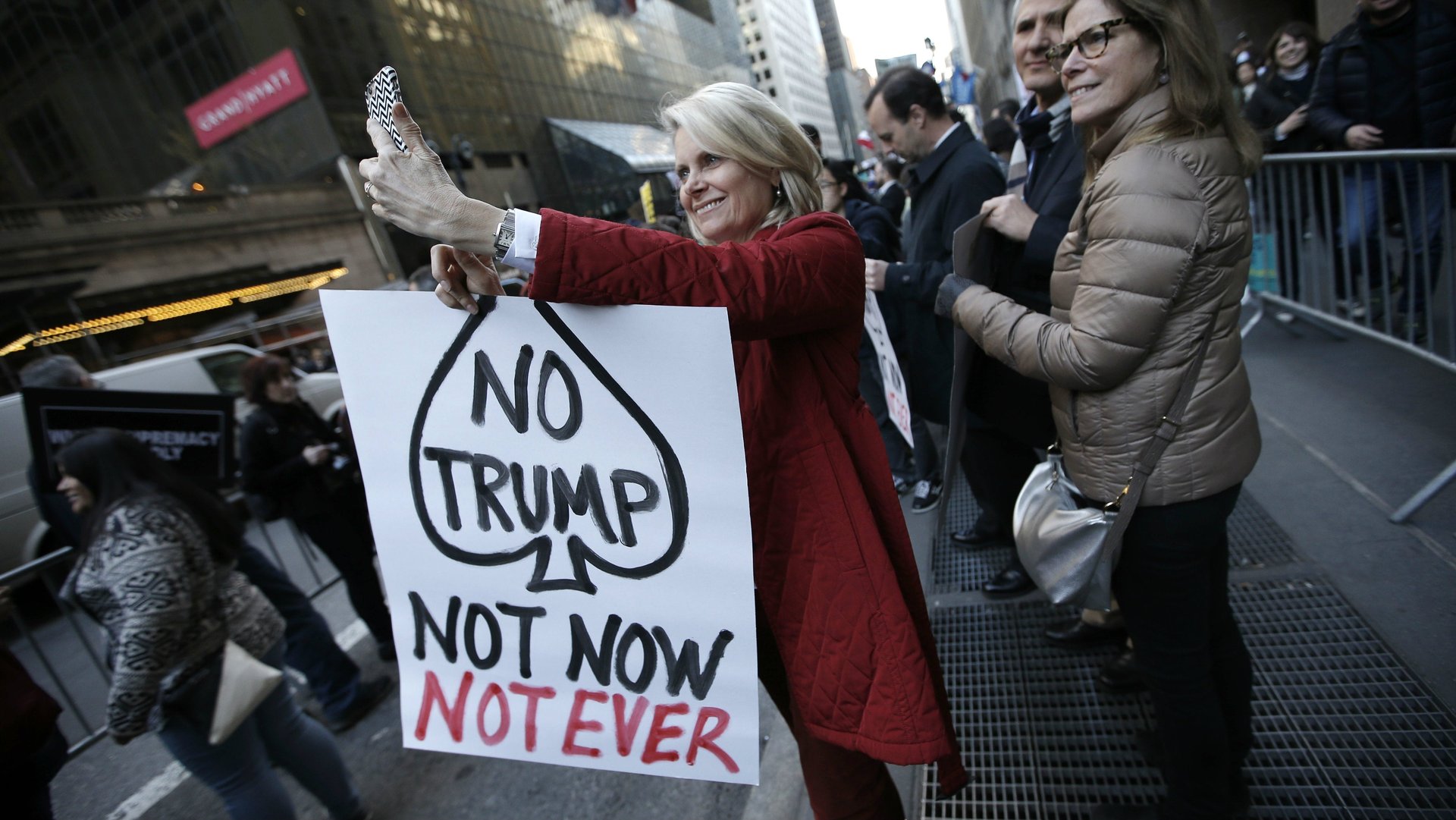Before you post that #protest selfie at the inauguration protests, remember that police can see your social media posts
Demonstrators posting photos and tweets from the marches planned in all 50 states to protest the inauguration of Donald J. Trump should remember: police may be looking at them, too.


Demonstrators posting photos and tweets from the marches planned in all 50 states to protest the inauguration of Donald J. Trump should remember: police may be looking at them, too.
Law enforcement agencies around the US have spent a collective $4.75 million on tools that track and organize massive amounts of data culled from social media posts, according to the Brennan Center for Justice at the New York University School of Law.
In the event of an arrest, police can pull potentially incriminating data from social media posts—even deleted ones—about where you were or who you were with. Photos of the crowd can put others at risk too. During protests in Baltimore following the 2015 death of Freddie Gray, police ran photos posted on social media through face-recognition software to identify people with outstanding warrants and arrest them on the spot.
“The kind of monitoring they can do and the kind of analysis that they can do is so far beyond just me following a person on Twitter, or searching a hashtag,” says Rachel Levinson-Waldman, senior counsel in the liberty and national security program at the Brennan Center for Justice. “It’s so much more powerful and has more implications in terms of freedom of speech, freedom of association, and especially freedom to protest and demonstrate.”
Artist and activist Tim Schwartz advises protesters to use prepaid burner phones at demonstrations to avoid being tracked; communicate on an encrypted platform like Signal; write a lawyer’s phone number on their bodies; and be selective about what they share on social media.
“You have to be very careful about what you post,” he says. “The data is not going away. Whatever you put on your Facebook, it’s probably going to exist in some form on a company’s server forever. As laws change in the future, as the point of view of the government changes in the future, you might be liable for things you said in your past.”